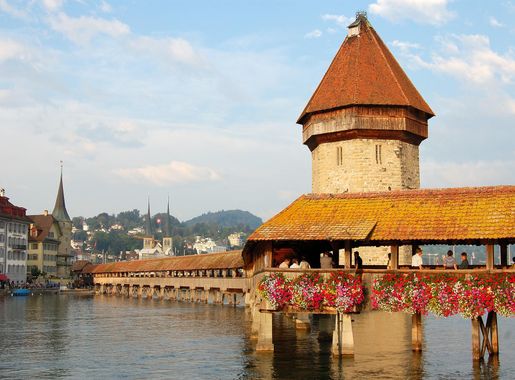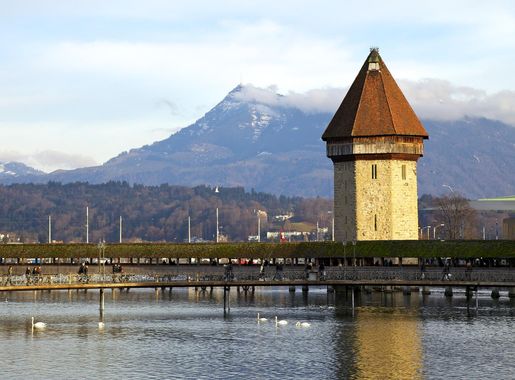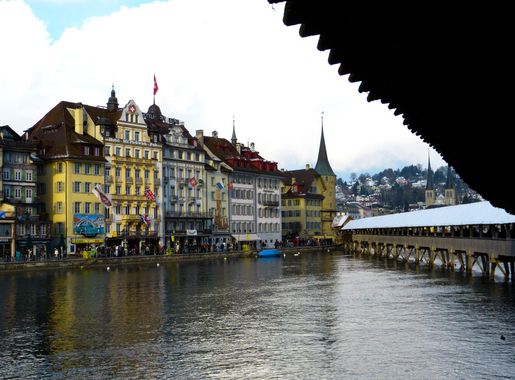
The Timeless Charm of Chapel Bridge
Discover Chapel Bridge in Lucerne: A Historic Footbridge with Stunning Views, Medieval Art, and a Rich Cultural Heritage in the Heart of Switzerland.
Chapel Bridge, or Kapellbrücke, in Lucerne, Switzerland, is an iconic landmark that dates back to the 14th century. This covered wooden footbridge spans the Reuss River, connecting the old town to the new town. What makes it truly unique are the 17th-century triangular paintings that adorn its interior, depicting the history of Lucerne and Switzerland. At the mid-point of the bridge stands the Wasserturm, a sturdy water tower that has served various roles throughout history, including a prison and a treasury. Strolling across the Chapel Bridge offers not only a walk through history but also spectacular views of the surrounding mountains and the serene waters of Lake Lucerne. The bridge has been meticulously restored since a fire in 1993, preserving its historical significance while maintaining its rustic charm. Nearby, you'll find cozy cafes and boutiques that invite you to linger and soak in the ambiance of this picturesque town. Lucerne itself is a gem of a destination, with its medieval architecture, vibrant cultural scene, and stunning natural landscapes. The Chapel Bridge serves as a perfect starting point for exploring the many attractions the city has to offer, from the Lion Monument to the Swiss Transport Museum. Whether you're a history buff, a nature lover, or a casual traveler, Chapel Bridge in Lucerne promises a memorable experience.
Local tips in Chapel Bridge
- Visit early in the morning or late in the afternoon to avoid crowds and capture the best photos.
- Don’t miss the paintings inside the bridge, each panel tells a different part of Lucerne's history.
- Combine your visit with a boat trip on Lake Lucerne for a complete experience.
- Explore the nearby Old Town area, filled with charming shops and delightful cafes.
- Wear comfortable shoes as the bridge and surrounding areas are best explored on foot.
The Timeless Charm of Chapel Bridge
Chapel Bridge, or Kapellbrücke, in Lucerne, Switzerland, is an iconic landmark that dates back to the 14th century. This covered wooden footbridge spans the Reuss River, connecting the old town to the new town. What makes it truly unique are the 17th-century triangular paintings that adorn its interior, depicting the history of Lucerne and Switzerland. At the mid-point of the bridge stands the Wasserturm, a sturdy water tower that has served various roles throughout history, including a prison and a treasury. Strolling across the Chapel Bridge offers not only a walk through history but also spectacular views of the surrounding mountains and the serene waters of Lake Lucerne. The bridge has been meticulously restored since a fire in 1993, preserving its historical significance while maintaining its rustic charm. Nearby, you'll find cozy cafes and boutiques that invite you to linger and soak in the ambiance of this picturesque town. Lucerne itself is a gem of a destination, with its medieval architecture, vibrant cultural scene, and stunning natural landscapes. The Chapel Bridge serves as a perfect starting point for exploring the many attractions the city has to offer, from the Lion Monument to the Swiss Transport Museum. Whether you're a history buff, a nature lover, or a casual traveler, Chapel Bridge in Lucerne promises a memorable experience.
Iconic landmarks you can’t miss
Chapel Bridge
Discover the iconic Chapel Bridge in Lucerne, a historical wooden marvel adorned with art and surrounded by breathtaking Swiss landscapes.
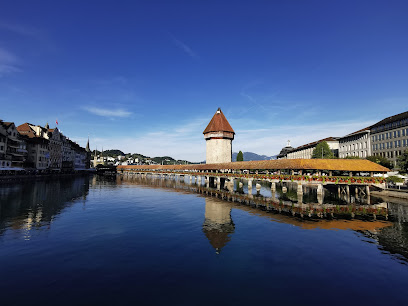
Spreuerbrücke
Experience the charm of Lucerne at the historic Spreuerbrücke, a stunning wooden bridge with captivating murals and breathtaking river views.
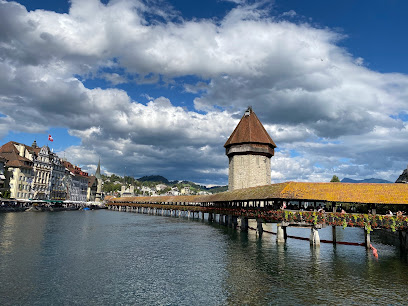
Museggmauer
Discover the Museggmauer in Lucerne, a stunning medieval wall offering breathtaking views and a glimpse into the city's rich history.
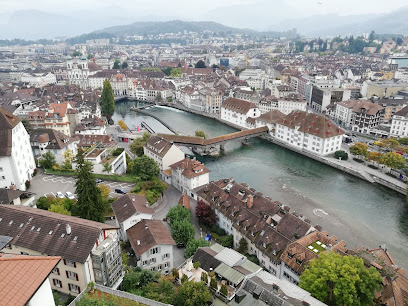
Fritschibrunnen
Discover the enchanting Fritschibrunnen in Lucerne, a historical landmark that showcases the city’s rich heritage and stunning architecture.
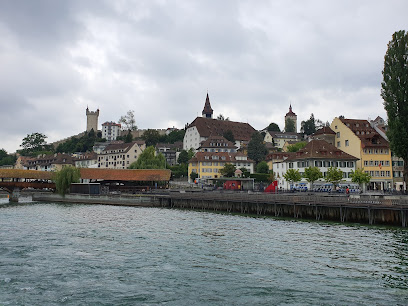
Rathaussteg
Discover the breathtaking views and vibrant atmosphere of Rathaussteg, Lucerne's iconic pedestrian bridge connecting history and natural beauty.
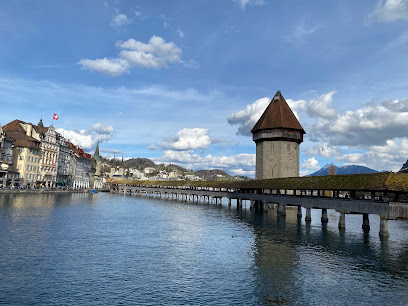
Jesuitenplatz
Discover the enchanting Jesuitenplatz, a cultural gem in Lucerne, home to stunning architecture and vibrant local life, perfect for a memorable visit.
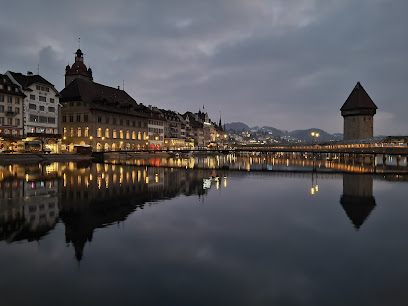
Rathausquai
Experience the breathtaking beauty of Rathausquai in Lucerne, where the charm of Switzerland meets stunning lake and mountain views.
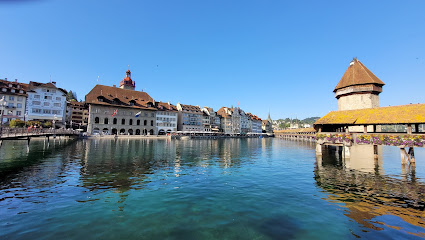
Shepherd with Sheep
Discover the serene beauty of 'The Shepherd with Sheep' in Lucerne, a charming tribute to Swiss pastoral life set against stunning alpine vistas.
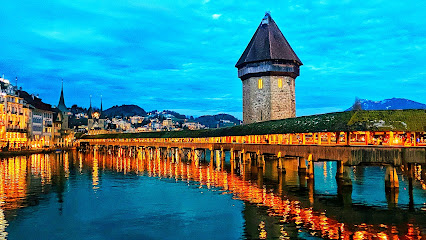
Sternenplatz Square
Discover the charm of Sternenplatz Square in Lucerne, a historical landmark with stunning murals and a vibrant atmosphere perfect for tourists.
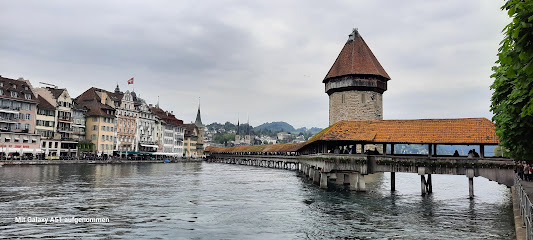
Brunnen mit Güggeli
Discover the charm of Brunnen mit Güggeli in Lucerne, a picturesque fountain showcasing local folklore and stunning artistry in a vibrant atmosphere.
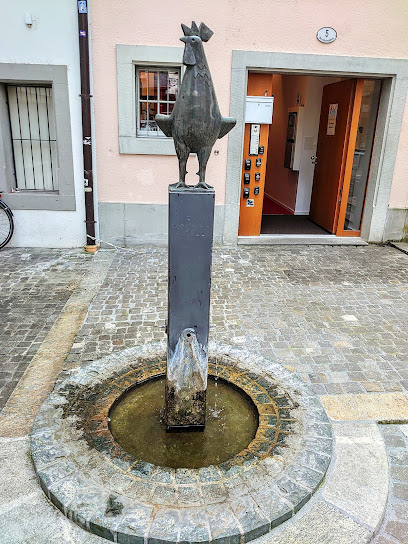
Unmissable attractions to see
Chapel Bridge
Explore the historic Chapel Bridge in Lucerne, a stunning wooden structure rich in history and breathtaking views that connect the past with the present.
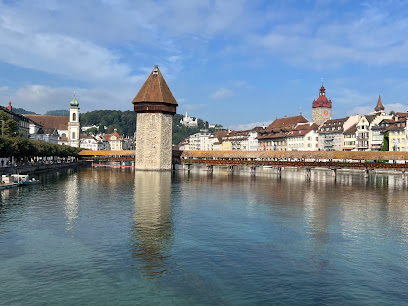
Museggmauer
Discover Lucerne’s medieval Museggmauer, a stunning fortification filled with history, breathtaking views, and cultural experiences.
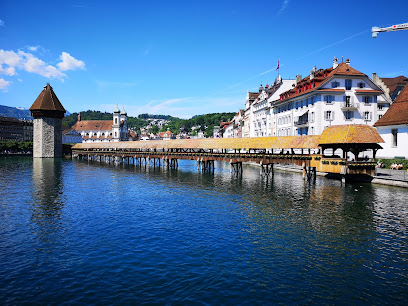
Lucerne Needle Dam
Discover the Lucerne Needle Dam, an impressive historical landmark blending engineering prowess with stunning natural scenery in the heart of Switzerland.
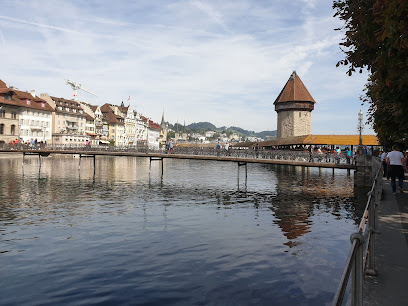
Weinmarkt-Brunnen
Discover the historic charm of Weinmarkt-Brunnen in Lucerne, a vibrant market square showcasing Swiss culture and stunning architecture.
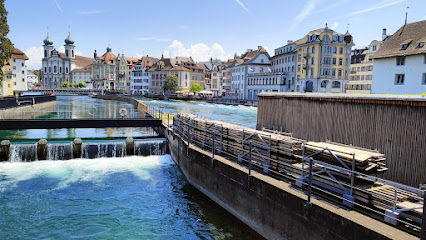
Rathausquai
Experience the breathtaking beauty and vibrant culture of Rathausquai, a must-see waterfront gem in the heart of Lucerne, Switzerland.
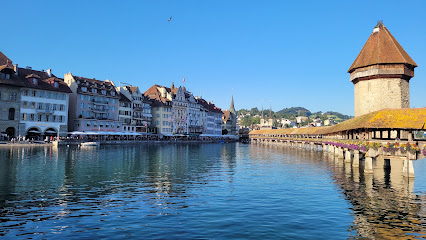
Shepherd with Sheep
Experience the serene beauty of Lucerne through the charming Shepherd with Sheep attraction, where pastoral life meets breathtaking scenery.
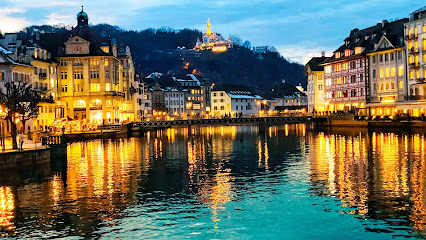
Wasserturm
Explore the stunning Wasserturm in Lucerne, a historic water tower and a symbol of Swiss heritage, offering picturesque views and rich cultural experiences.
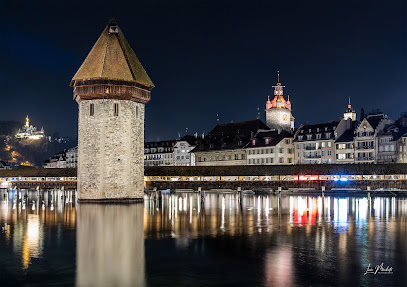
Brunnen
Experience the enchanting beauty of Brunnen, a serene lakeside village in Lucerne, perfect for relaxation and outdoor adventures.
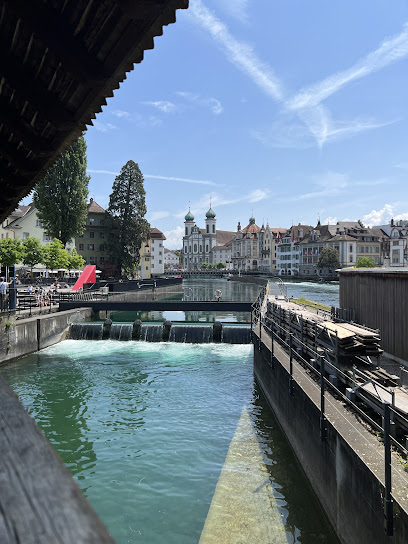
Brunnen Kurplatz
Discover the serene beauty of Brunnen Kurplatz, a picturesque lakeside park in Lucerne perfect for relaxation and cultural experiences.
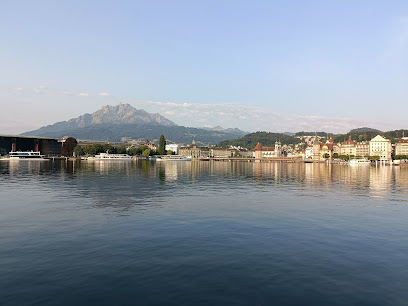
Brunnen mit Güggeli
Experience the enchanting Brunnen mit Güggeli in Lucerne, a picturesque tourist attraction that captures the city's rich history and charm.

Meeting point Lucerne
Discover the heart of Lucerne at the Meeting Point: a vibrant square surrounded by stunning lakeside views and rich Swiss culture.
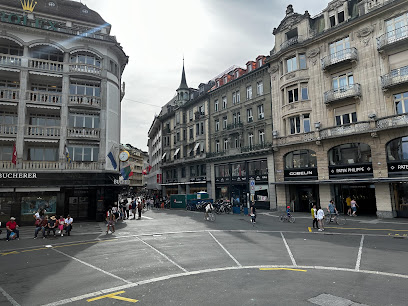
Essential places to dine
Pfistern
Experience authentic Swiss cuisine at Pfistern in Lucerne—where tradition meets modern elegance amid stunning surroundings.
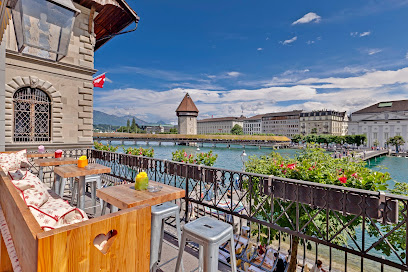
Mill'Feuille
Discover Mill'Feuille: A Culinary Haven in Lucerne Offering Authentic Swiss Flavors in a Cozy Atmosphere.
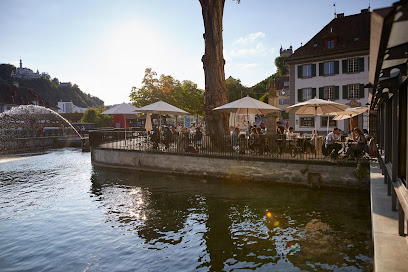
Stadtkeller
Discover authentic Swiss cuisine at Stadtkeller in Lucerne - where delicious fondues meet lively cultural experiences.
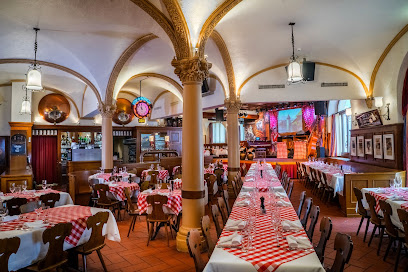
Ristorante Pizzeria Weisses Kreuz
Experience authentic Italian cuisine at Ristorante Pizzeria Weisses Kreuz in Lucerne, where every bite takes you on a flavorful journey.
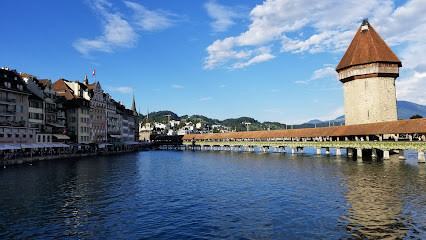
Rathaus Brauerei
Experience authentic Swiss cuisine and handcrafted beers at Rathaus Brauerei in Lucerne—where tradition meets taste.
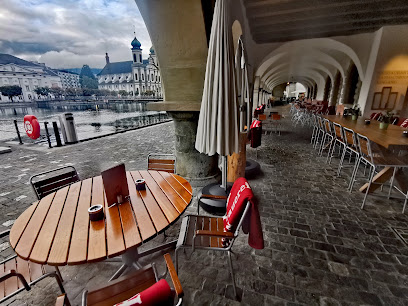
Restaurant Schiff
Experience authentic Swiss cuisine with stunning lake views at Restaurant Schiff in Lucerne - where tradition meets flavor.
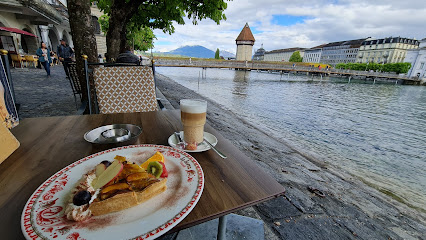
Ristorante Da Ernesto
Experience authentic Italian cuisine at Ristorante Da Ernesto in Lucerne, where delicious flavors meet stunning lakeside views.
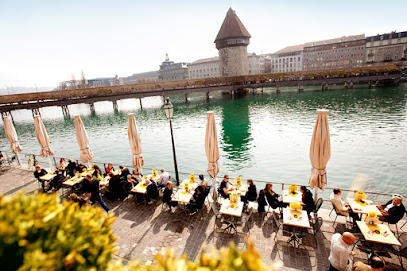
Barca
Experience Mediterranean flavors and vibrant nightlife at Barca in Lucerne – your ultimate dining destination.
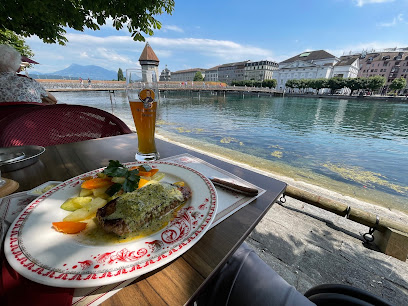
Restaurant Des Alpes
Experience authentic Swiss cuisine at Restaurant Des Alpes in Lucerne with stunning views of Lake Lucerne and surrounding mountains.
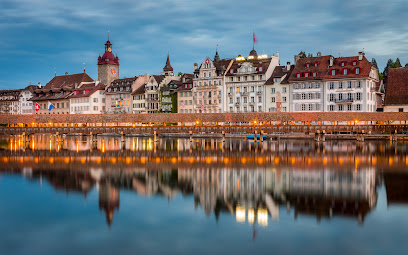
PURA PASTA
Experience authentic Italian cuisine at PURA PASTA in Lucerne - where every bite feels like a trip to Italy.
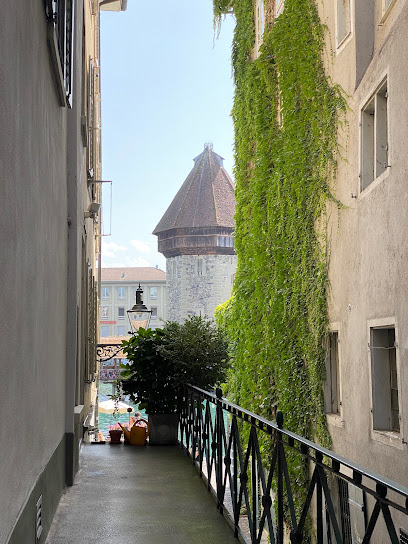
Markets, malls and hidden boutiques
Casagrande Souvenirs • Watches Grendel
Discover the essence of Swiss craftsmanship at Casagrande Souvenirs, your destination for unique gifts and expert watch repair in Lucerne.
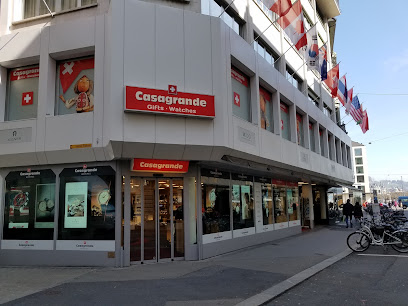
Casagrande Souvenirs • Watches Kapellgasse
Explore Casagrande Souvenirs in Lucerne for unique Swiss gifts, exquisite watches, and a delightful shopping experience.
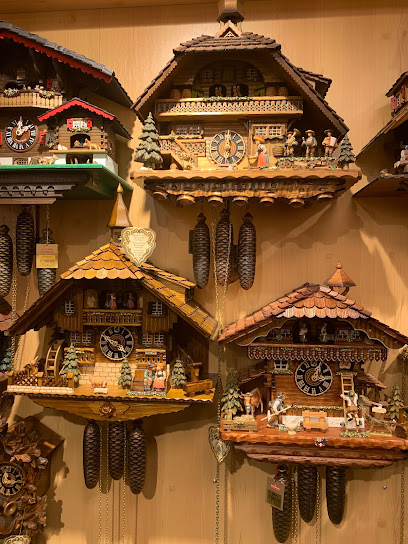
Changemaker
Explore Changemaker in Lucerne – a gift shop dedicated to fairtrade and ecological products, perfect for unique souvenirs and stylish accessories.
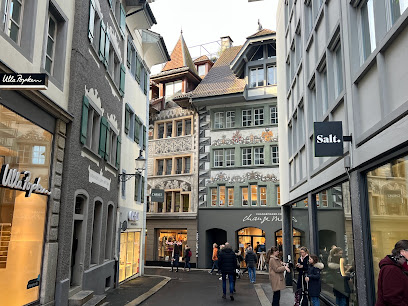
Old swiss shop
Discover unique Swiss souvenirs at the Old Swiss Shop in Lucerne, featuring authentic chocolates, crafts, and gifts that embody Swiss culture.
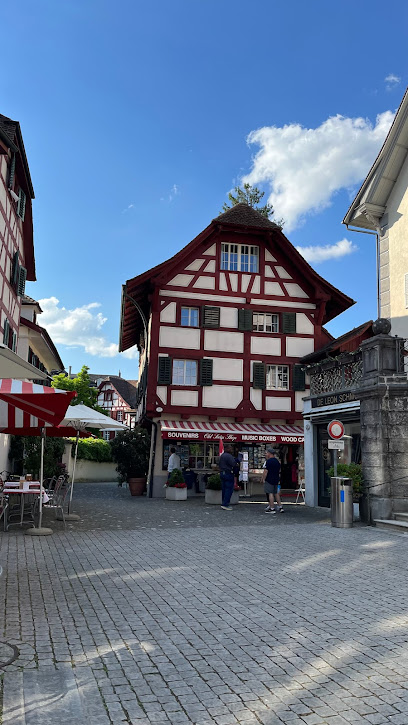
Bijou les Boutiques
Discover Bijou les Boutiques in Lucerne, where fashion meets elegance in a charming setting, perfect for every style enthusiast.
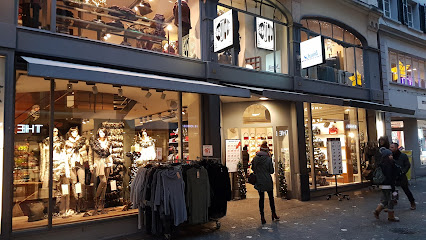
Wasserturm Souvenirshop GmbH
Discover authentic Swiss souvenirs at Wasserturm Souvenirshop in Lucerne, where every item tells a story of Swiss culture and craftsmanship.
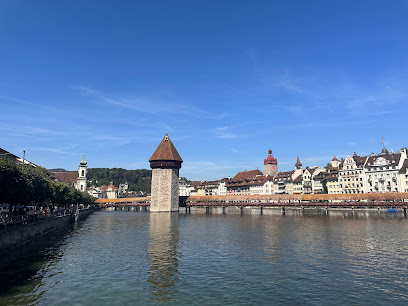
Pilatus Shop Luzern
Explore the charm of Switzerland with unique souvenirs and gifts at Pilatus Shop Luzern, a must-visit destination for every traveler.
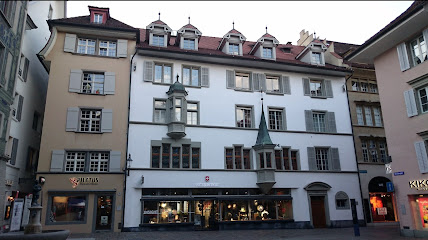
Boutique Ammann AG | fashion, jewelry & gifts
Explore Boutique Ammann AG in Lucerne for exquisite fashion accessories, handcrafted jewelry, and unique gifts that embody Swiss elegance.
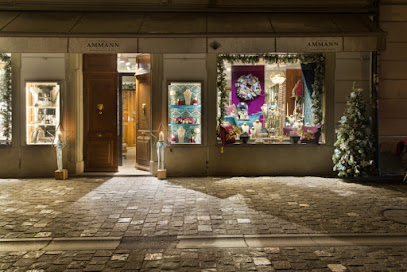
Grieder
Experience luxury shopping at Grieder, Lucerne's premier department store offering high-end fashion and local designs.
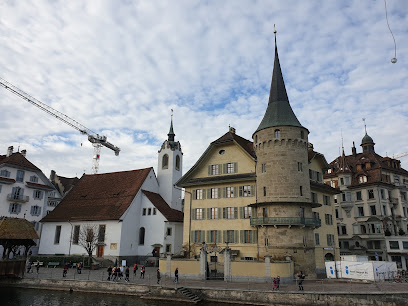
Boutique La Pierre Luzern
Explore Boutique La Pierre Luzern, where exquisite jewelry meets Swiss craftsmanship in the heart of Lucerne.
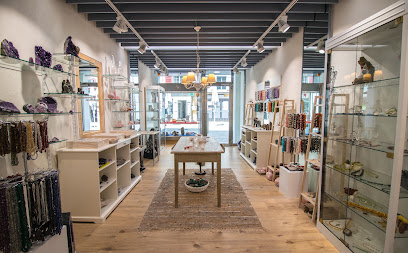
Essential bars & hidden hideouts
Mr. Pickwick Pub Luzern
Experience British hospitality with a Swiss twist at Mr. Pickwick Pub Luzern, where great food, drinks, and atmosphere await.
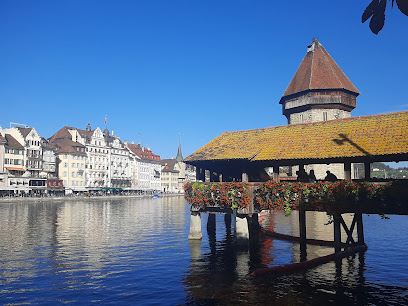
Suite small plates & cocktails
Experience the ultimate blend of flavor and ambiance at Suite Small Plates & Cocktails, a chic bar in Lucerne offering small plates and innovative cocktails.
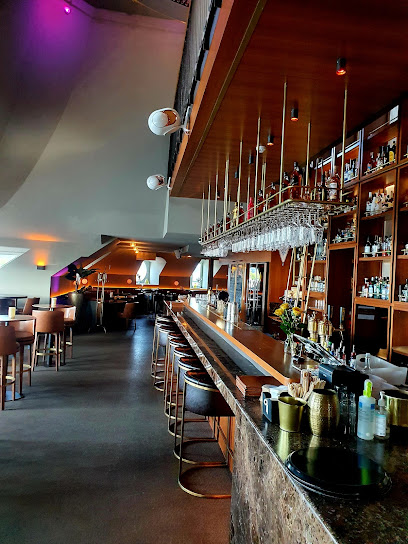
Bierliebe & Friends
Experience the best of Lucerne's beer culture at Bierliebe & Friends, where unique burgers meet local craft brews in a welcoming atmosphere.
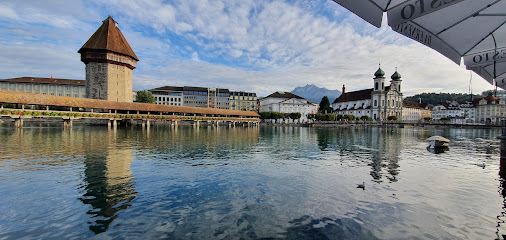
Bar Capitol
Discover the vibrant nightlife of Lucerne at Bar Capitol, where delicious drinks and a lively atmosphere come together for an unforgettable experience.
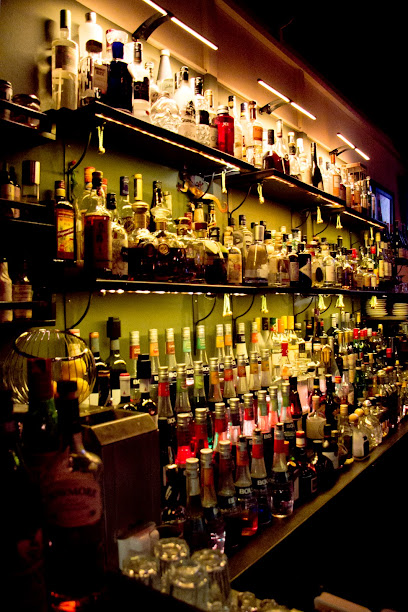
Bar bei Miguel
Discover Bar bei Miguel in Lucerne: a vibrant gastropub offering exquisite local cuisine and a lively atmosphere perfect for every traveler.
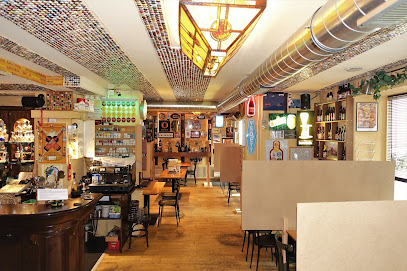
FINALE
Discover the lively atmosphere of FINALE bar in Lucerne, offering delicious drinks and a vibrant social scene perfect for tourists.
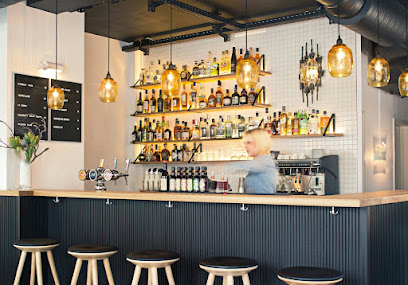
La Bonne Cave
Experience exquisite wines and delightful cuisine in the heart of Lucerne at La Bonne Cave, a charming wine bar and restaurant.
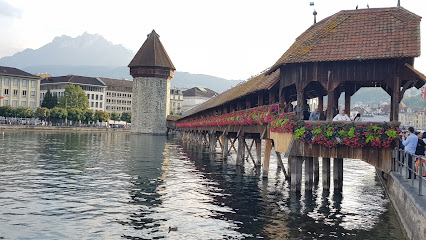
Storchen
Discover the charm of Storchen in Lucerne, a cozy wine bar offering a curated selection of exquisite wines and delicious tapas in a warm atmosphere.
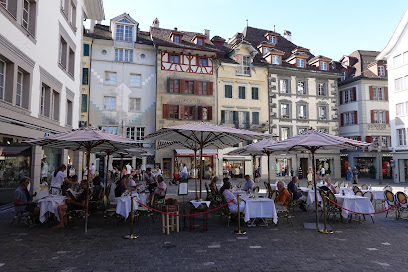
Blok Bar
Experience the vibrant nightlife at Blok Bar in Lucerne, where great drinks and social ambiance create unforgettable memories.
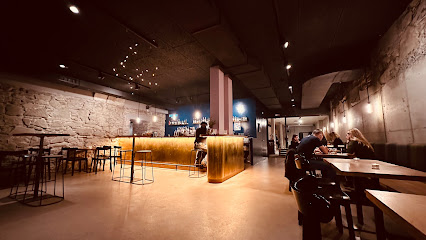
Das weisse Schaf
Discover the vibrant nightlife of Lucerne at Das weisse Schaf, a cozy bar offering local drinks and a welcoming atmosphere.
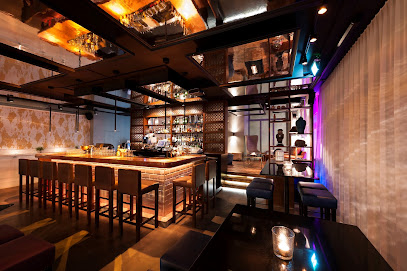
Local Phrases
-
- HelloGrüezi
[gru-ay-tsee] - GoodbyeWiderluege
[vee-der-loo-geh] - YesJa
[ya] - NoNei
[nye] - Please/You're welcomeBitte
[bi-teh] - Thank youMerci
[mer-see] - Excuse me/SorryEntschuldigung
[ent-shool-dee-goong] - How are you?Wie goht's?
[vee gohts] - Fine. And you?Guet. Und dir?
[gweet. oont deer] - Do you speak English?Redsch du Englisch?
[redsh doo eng-leesh] - I don't understandIch verstah nöd
[ikh fer-shta nud]
- HelloGrüezi
-
- I'd like to see the menu, pleaseIch möcht gärn d'Menükarte luege, bitte
[ikh merkt gairn deh-men-oo-kar-teh loo-geh, bi-teh] - I don't eat meatIch ess kei Fleisch
[ikh ess kigh fly-sh] - Cheers!Proscht!
[prosht] - I would like to pay, pleaseIch möcht bitte zahle
[ikh merkt bi-teh tsah-luh]
- I'd like to see the menu, pleaseIch möcht gärn d'Menükarte luege, bitte
-
- Help!Hüüf!
[hoof] - Go away!Gang weg!
[gahng vehg] - Call the Police!Rüef d'Polizei!
[roo-ef deh-poh-lee-tsigh] - Call a doctor!Rüef en Arzt!
[roo-ef en artsht] - I'm lostIch ha mi verluegt
[ikh hah mee fer-loo-egt] - I'm illIch bin krank
[ikh been krunk]
- Help!Hüüf!
-
- I'd like to buy...Ich möcht ... chaufe
[ikh merkt ... kow-feh] - I'm just lookingIch luege nume
[ikh loo-geh noo-meh] - How much is it?Was koscht das?
[vahs kohsht dahs] - That's too expensiveDas isch zviel
[dahs ish tsee-el] - Can you lower the price?Chasch du de Priis reduziere?
[khash doo deh prees reh-doo-tsee-reh]
- I'd like to buy...Ich möcht ... chaufe
-
- What time is it?Wieviel isch's?
[vee-vee-el ish] - It's one o'clockEs isch eis
[ehs ish ighs] - Half past (10)Halb zehni
[halb tseh-nee] - MorningMorge
[mor-guh] - AfternoonNamittag
[nah-mit-tahg] - EveningAbig
[ah-bikh] - YesterdayGestere
[geh-steh-reh] - TodayHüt
[hoot] - TomorrowMorn
[morn] - 1Eis
[ighs] - 2Zwei
[tsvigh] - 3Drei
[dry] - 4Vier
[feer] - 5Fünf
[foonf] - 6Sechs
[zeks] - 7Siebe
[zee-buh] - 8Acht
[ahkht] - 9Nün
[nooen] - 10Zehn
[tsayn]
- What time is it?Wieviel isch's?
-
- Where's a/the...?Wo isch es...?
[woh ish ays] - What's the address?Was isch d'Adresse?
[vahs ish dah-drehs-seh] - Can you show me (on the map)?Chasch mir das zeige (uf em Plan)?
[khash meer dahs tsigh-eh (oof aim plahn)] - When's the next (bus)?Wänn fahrt de nächsti (Bus)?
[vehnn fart deh nekh-shtee (boos)] - A ticket (to ....)E Billett (nach ....)
[eh bill-ett (nahkh ....)]
- Where's a/the...?Wo isch es...?
History of Chapel Bridge
-
Chapel Bridge (Kapellbrücke) was originally built in 1333 as a part of the city's fortifications and served as a crucial crossing point over the Reuss River. Its construction marked the beginning of a vital connection between the Old Town and the newer settlements on the opposite bank, enhancing trade and travel. The bridge was named after the nearby St. Peter's Chapel, which underscores its significance in both transportation and spiritual life in Lucerne.
-
In the 17th century, the Chapel Bridge became not just a functional structure but also a canvas for cultural expression. The interior of the bridge was adorned with a series of paintings that depicted the history of Lucerne, its legends, and important events. These artworks are a testament to the rich cultural life of the region and reflect the pride of the Lucerne citizens in their heritage.
-
A catastrophic fire in August 1993 destroyed a significant portion of the Chapel Bridge, including many of its historic paintings. This event shocked the local community and prompted a massive restoration effort. The bridge was reconstructed and reopened in 1994, preserving the original structure while incorporating new measures to protect it from future disasters.
-
Today, the Chapel Bridge stands as a symbol of resilience and a key tourist attraction in Lucerne. It draws millions of visitors each year who come to admire its beauty and historical significance. The bridge not only serves as a vital link within the city but also stands as a reminder of Lucerne's rich history and cultural evolution over the centuries.
-
Chapel Bridge plays an integral role in the cultural life of Lucerne. It is often the site of various events, festivals, and local gatherings, contributing to the community's vibrant atmosphere. Its picturesque views, especially with the backdrop of the Swiss Alps and the surrounding architecture, enhance the social and cultural fabric of the region, making it a beloved landmark for both locals and visitors alike.
Chapel Bridge Essentials
-
Chapel Bridge is located in the heart of Lucerne, easily accessible from various neighbourhoods. From the Lucerne train station, it’s a short 10-minute walk. You can also take local buses (lines 1, 2, or 24) that stop near the bridge. If you’re coming from nearby towns, direct trains from Zurich or Interlaken also arrive at Lucerne station, from where you can walk to the Chapel Bridge.
-
Chapel Bridge is pedestrian-friendly, making it easy to explore on foot. Bicycles can be rented from various shops around the city, and there are designated bike lanes. Public transport is efficient, with local buses and boats on Lake Lucerne connecting you to other parts of the city and surrounding areas. Taxis are available but can be more expensive.
-
Lucerne is generally a safe city for tourists. However, it’s wise to stay vigilant, especially in crowded areas like Chapel Bridge. Petty crimes such as pickpocketing can occur. Avoid isolated areas at night, particularly along the lakefront. While no specific high-crime areas are reported, maintaining awareness of your surroundings is key.
-
In case of an emergency, dial 112 for police, fire, or ambulance services. There are hospitals and urgent care centers in Lucerne. It is advisable to have travel insurance that covers medical emergencies. Pharmacies are also available for non-emergency medical needs, and they can assist with minor injuries or health issues.
-
Fashion: Do dress comfortably and wear sturdy shoes for walking. During church visits, cover your shoulders and knees. Religion: Do respect local customs, particularly in religious sites. Public Transport: Do validate your ticket before boarding and be courteous to fellow passengers. Don’t eat or drink on public transport. Greetings: Do greet with a friendly 'Grüezi' (hello) when meeting locals. Eating & Drinking: Do enjoy local specialties at nearby restaurants. Don’t engage in loud conversations or disrupt the ambiance in cafes.
-
To experience Chapel Bridge like a local, visit early in the morning or late afternoon to avoid crowds. Take a moment to enjoy the views and the historic paintings under the bridge. Explore the nearby Old Town for charming shops and cafes. Consider taking a boat tour on Lake Lucerne for a unique perspective of the bridge and surrounding mountains. Engage with local vendors at the nearby markets for fresh produce and local crafts.
Nearby Cities to Chapel Bridge
-
Things To Do in Zurich
-
Things To Do in Grindelwald
-
Things To Do in Interlaken
-
Things To Do in Thun
-
Things To Do in Murren
-
Things To Do in Bern
-
Things To Do in Basel
-
Things To Do in Balzers
-
Things To Do in Schaan
-
Things To Do in Gamprin
-
Things To Do in Vaduz
-
Things To Do in Eschen
-
Things To Do in Triesenberg
-
Things To Do in Mauren
-
Things To Do in Ruggell

